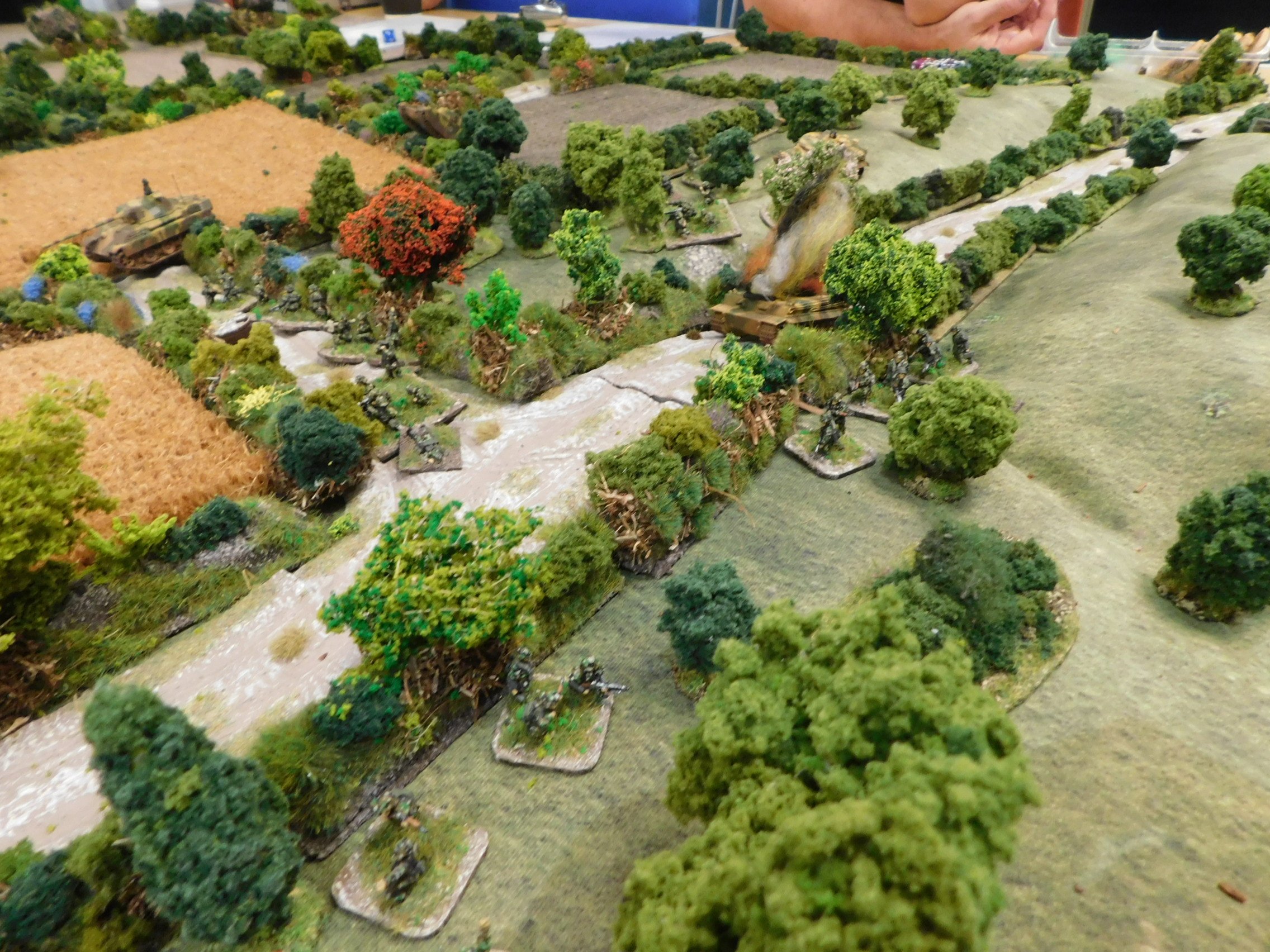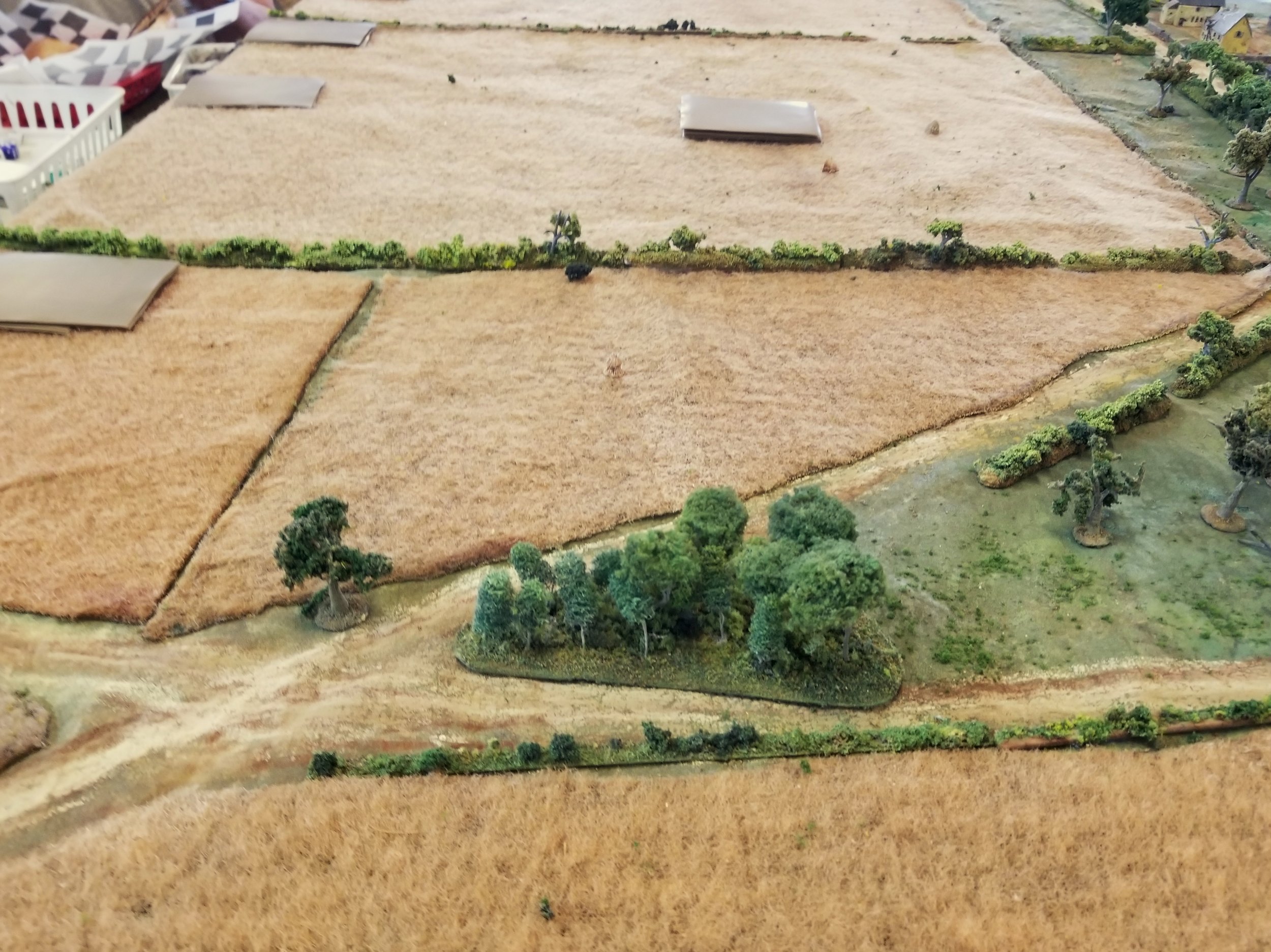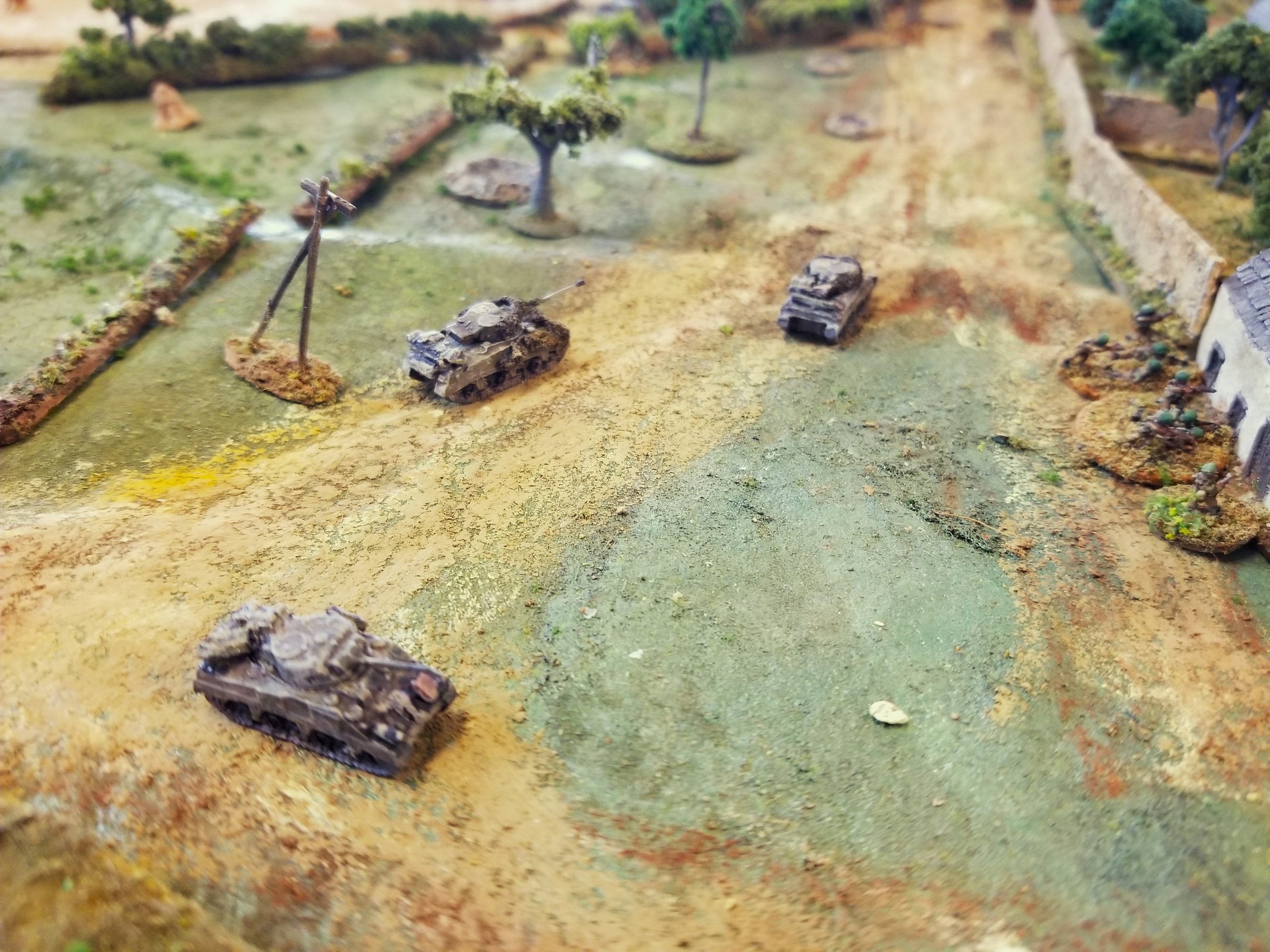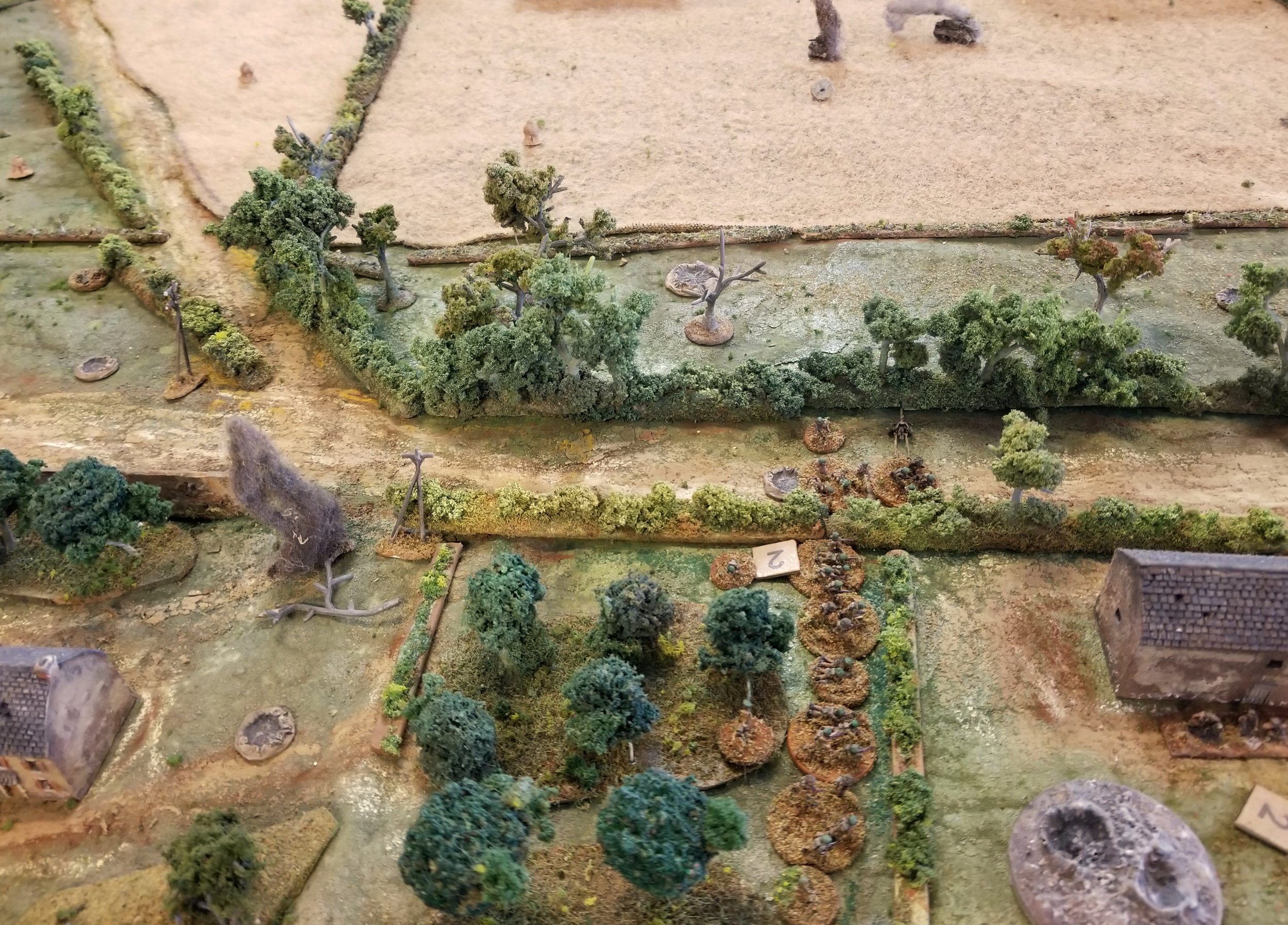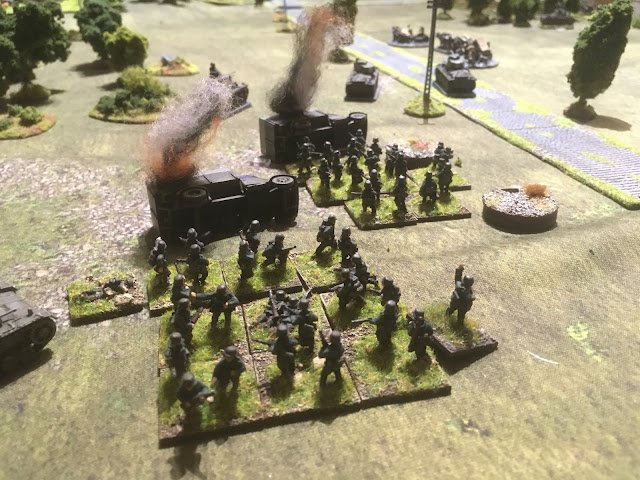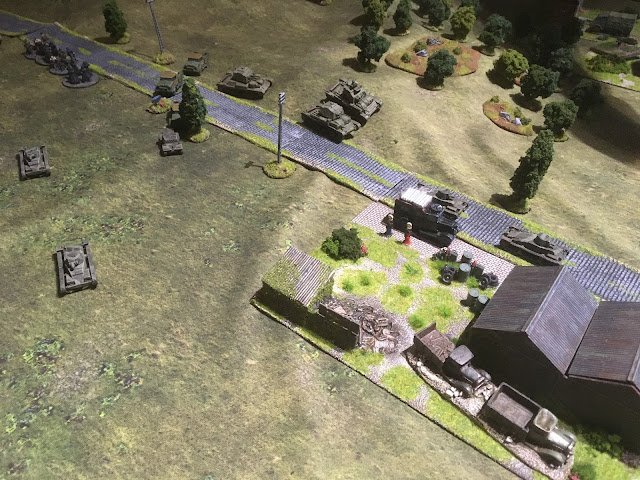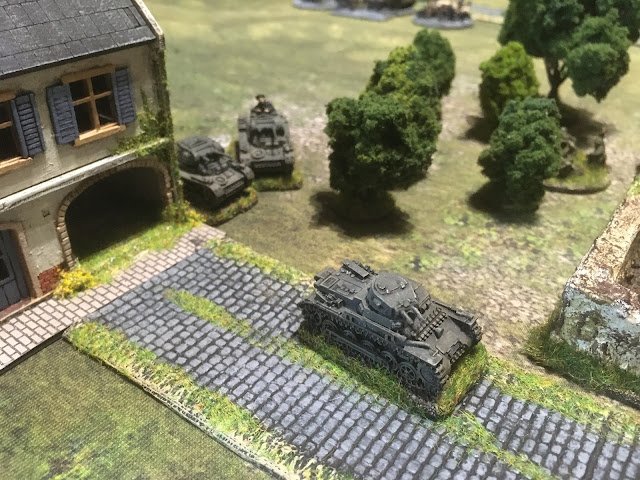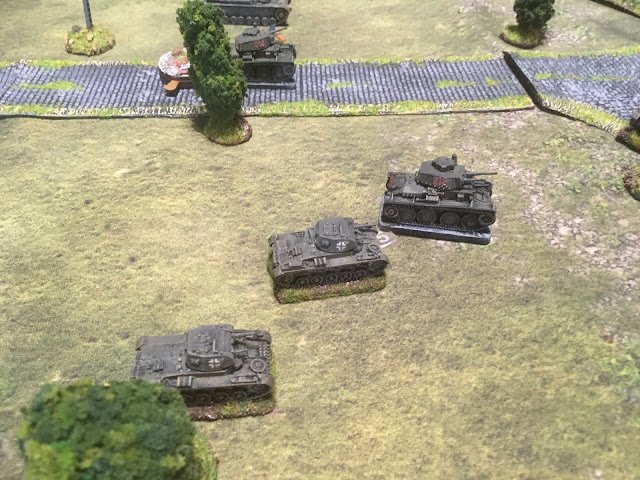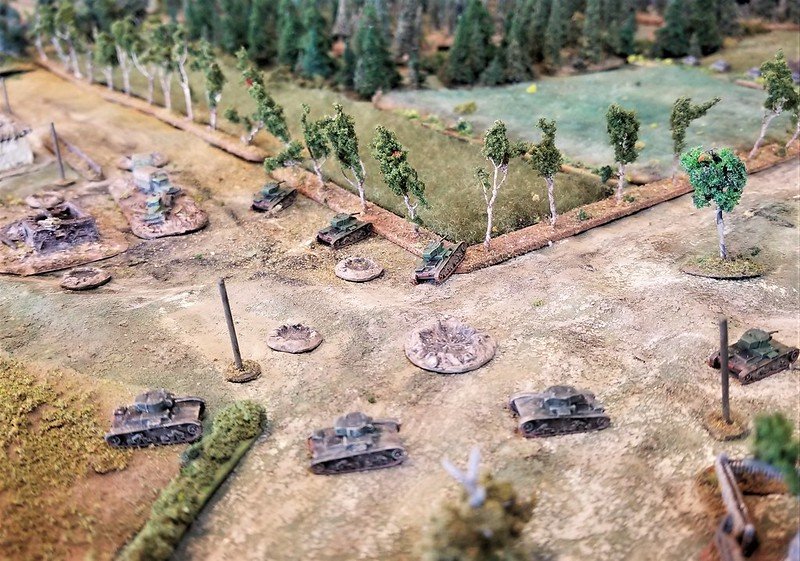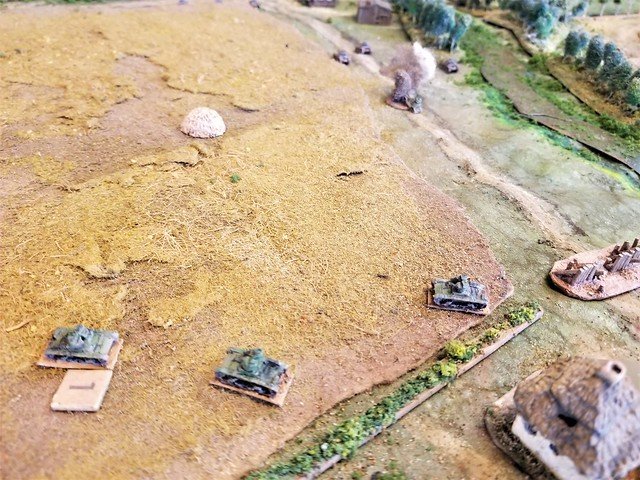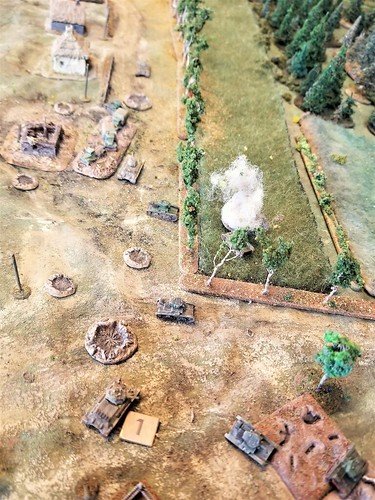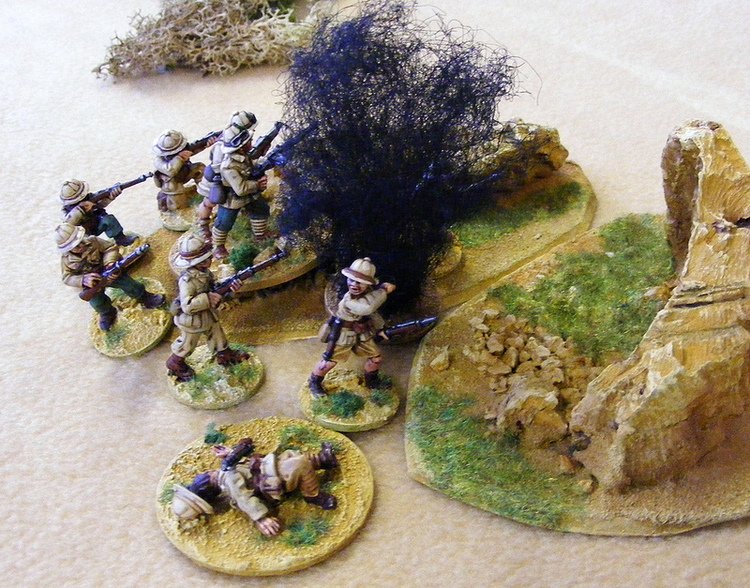My afternoon game at Operation Market Lardon 2022 was a game of I Ain’t Been Shot Mum run by the legendary Phil and Jenny.
I must confess that I got so into the game that I forgot to note the background properly, but from memory Scottish infantry supported by tanks from the Lancers, commanded by Noddy and I, would be defending a village in Normandy somewhere against an attack by a combined force of infantry and armour from the Waffen SS commanded by Andy and friend John.
View from the British end of the table: superb terrain.
We began the game with three platoons of infantry supporting three 6pdr anti-tank guns and access to off-table mortars. Later on four Sherman 75’s and a Sherman Firefly would appear.
The Germans had lots of troops for their attack: two Panthers, two Tigers, five Panzer IVs, and two (or it might have been three) strong infantry companies and a machine gun platoon.
The Germans ignored the left hand side of the battlefield and attacked down the axis of the roads in the centre (one infantry company, the Panthers and Panzer IVs) and on the British right (the Tigers and the rest of the infantry).
A quick note on the terrain. The table sloped slightly upwards towards the village, so visibility of the opposition was good for both the attackers and defenders. It was also high summer, so the ground was baked hard: movement on any open ground was good and the only real obstacle was the bocage, which infantry would have to clamber over and tanks attempt to bounce over with an attendant risk of bogging down.
The Germans survey the field: my thanks to Andy and John for being excellent opponents.
We had had to cover the whole front, so had an anti-tank gun in the houses on the left, one near the bombed out church in the centre, and one lurking near the crossroads on the right i.e. covering the main road. We had a platoon of infantry dug in around the church; another in the ruined houses in the centre, and one more in the undergrowth on the right. As a bit of psychological warfare, we had two Dummy Blinds towards the German entry end of the table nicely positioned where they would clearly be seen by the advancing enemy.
Lots of pictures follow but, in summary, the Germans advanced very quickly in the centre and on our right. One Panzer got distracted by Noddy’s cunning use of a Dummy Blind and ended up bogged down on some bocage and taken out by a flank shot from one of the Nodster’s anti-tank guns.
Meanwhile the German infantry in the centre had been halted by mortar fire brought in by the British FOO, so the Panzer IVs came forward to suppress the British infantry taking potshots at the Germans from the buildings at the rear of the field. This led to the British AT gun in the centre opening fire and, with a series of what it must be said were very good dice rolls, taking out three of them. The last one had been bogged down as it crossed bocage just behind the advancing infantry.
The game in full swing
On the British right, the German infantry had advanced to within a field’s distance of where the British Blinds were, so the Brits deployed and a firefight broke out. The initial British ambush was disappointing, and we could see the Tigers coming forward to break the deadlock that had formed but, luckily, at that moment our tanks arrived. The Shermans took up positions along the hedgerows, bolstering the infantry, and the Firefly settled down to help our third AT gun cover the road.
Lucky it did so, for at that moment one of the German Tigers appeared hull-down in a dip on the road. The Firefly opened fire and (again the lucky dice) with a superb shot blew the Tiger’s turret off. The other Tiger returned fire and, despite it’s position in cover, hit the Firefly square on its front armour. This was surely Ronson time for the British tank but (do I need to mention the lucky dice?) the Tiger’s gun strike 11 bounced off the Sherman’s armour 6!
The Firefly returned fire and delivered a hammer blow to the German Tiger: bad engine damage and lots of Shock.
Meanwhile in the centre, the German infantry had just about recovered from the mortar fire and, with the two Panthers, were trying to push forward. Two platoons of British infantry had other ideas and, although the German infantry were causing casualties, they were definitely getting the worst of the firefight that followed.
Back to the right, and the British off-table mortars had started to find the range of the German infantry there: with the Tigers beaten back, there would be no advance there either.
As the game ended, the British had pushed a PIAT team along with the CSM forward right up to where the Panthers were. The last shot of the game was the PIAT firing into the flank of one of the Panthers. I’d like to say that it brewed up the Panther as well, but the CSM had forgotten to put his glasses on and the round flew off into the distance somewhere!
So it was a clear victory for the Brits aided, it has to be said, by the dice. Here are the pics:
My thanks to Phil and Jenny for setting up and running a superb game, and to Andy and John for providing the opposition.
Robert Avery
























